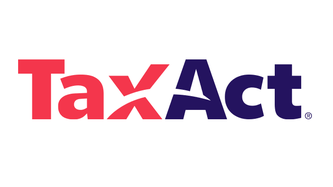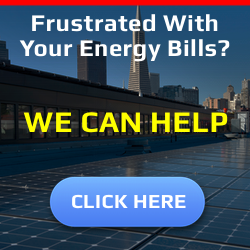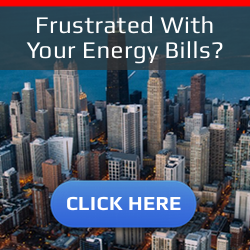Now is the time to make energy-efficient investments in your home, as two eco-friendly tax credits are set to expire at the end of 2025.
The Energy Efficient Home Improvement Credit (EEHIC) and the Residential Clean Energy Credit (RCEC) apply to a range of home improvements, from replacing windows and air conditioners to installing solar panels and geothermal heat pumps.
Instituted under the Energy Policy Act of 2005, both tax breaks were expanded under the Biden Administration’s Inflation Reduction Act, which pushed their expiration date to 2032. With the passage of the One Big Beautiful Bill Act, however, that cut-off was moved up to Jan. 1, 2026. (The OBBA also put an end to the $7,500 EV tax credit.)
There’s a lot of money to be saved: Households that claimed the EEHIC in 2023 were able to deduct an average of $880 from their federal returns. The average deduction for the Residential Clean Energy Credit was $5,000.
Start preparing your taxes with these options
Offers in this section are from affiliate partners and selected based on a combination of engagement, product relevance, compensation, and consistent availability.

TaxAct
Live support
Xpert Assist is available with any plan for a flat fee
Guarantees 100% accuracy and maximum refund
Some projects will take time to complete, however, especially since you’re in competition with other homeowners facing the same deadline.
With just a few months left, Loyola University environmental policy professor Gilbert Michaud says larger projects may be too ambitious.
“Homeowners may want to focus on the smaller projects that can still capture the tax credits and cut energy bills,” Michaud told CNBC Select, pointing to window replacements, insulation, new appliances and even heat pumps.
“These types of projects can be done in a matter of weeks,” he added, “and will deliver immediate energy savings.”
How much are the home energy tax credits worth?
Both credits are worth 30% of qualified expenses. You can write off a maximum of $3,200 with the EEHIC, including up to $1,200 for energy-efficient doors, windows, skylights, A/C, and insulation. A separate deduction of up to $2,000 is available if you buy and install a heat pump, water heater or biomass stove or boiler by year’s end.
| Category | Maximum credit |
|---|---|
| Home energy audit by certified auditor | $150 |
| Energy Star-certified windows, doors, skylights, insulation | $1,200 (combined) |
| HVAC, heat pump, biomass stove or boiler | $2,000 |
| Electrical upgrades | Go towards $1,200 limit |
Except for fuel cell property (which is capped at $500 per half-kilowatt of capacity), the Residential Clean Energy Credit has no dollar limit. Based on an average cost of $27,000, a homeowner who installs solar panels could enjoy tax savings of more than $8,100.
The credits are nonrefundable, so the amount you receive can’t exceed your total tax debt.
These upgrades also have long-term implications for your household expenses. In a study by the University of California’s Lawrence Berkeley National Laboratory, three-quarters of homeowners who installed rooftop solar were able to lower their electricity bills. The median annual savings came to $691.
Energy-efficient enhancements can also be a boon when you’re ready to sell: According to Zillow, 86% of homebuyers said having at least one climate-resilient feature was an important factor in their buying decision.
Still, when these tax breaks sunset, Michaud predicts a big decline in energy-efficient home improvements.
“We know that financial incentives play a major role in adoption rates — without them, many homeowners will downsize, delay or cancel projects altogether,” he said. “While some affluent homeowners will still make investments, broader adoption is challenging without policy support.”
Bad credit? You can still get funding for major expenses.
Offers in this section are from affiliate partners and selected based on a combination of engagement, product relevance, compensation, and consistent availability.


Upstart Personal Loans
Annual Percentage Rate (APR)
6.7% – 35.99%
Loan amounts
$1,000 to $75,000
Who qualifies for the home energy tax credits?
Only homeowners can qualify for the Energy Efficient Home Improvement Credit and the improvements must be to your existing primary residence in the U.S. (Rental properties and new construction are excluded).
The improvements must meet the energy efficiency standards set by the Department of Energy or the Energy Star program. (The IRS has a list of approved manufacturers.)
Renters and owners can qualify for the Residential Clean Energy Credit, but landlords or other property owners are not eligible. The deduction applies to purchase price and installation costs, but not interest or fees on loans.
The system must be new, used for the first time and installed before Jan. 1, 2026.
How to claim the credits
To claim the Energy Efficient Home Improvement Credit, file Form 5695, Residential Energy Credits Part II, with your 2025 federal tax return.
To claim the Residential Clean Energy Credit, file Form 5695, Residential Energy Credits with your return.
Subscribe to the CNBC Select Newsletter!
Money matters — so make the most of it. Get expert tips, strategies, news and everything else you need to maximize your money, right to your inbox. Sign up here.
Editorial Note: Opinions, analyses, reviews or recommendations expressed in this article are those of the Select editorial staff’s alone, and have not been reviewed, approved or otherwise endorsed by any third party.







